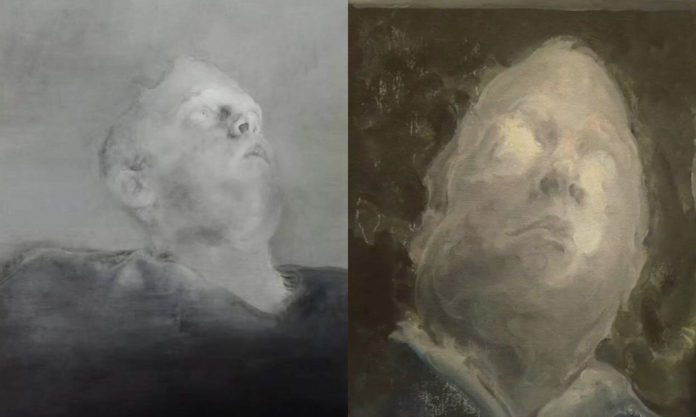Thomas came to Nanjing, as did I, and indeed many others, to learn Chinese, an exchange student from Luxembourg. Arriving in the late 90s, who knows what he expected, but perhaps last on his list was becoming the muse of one of China’s most prominent contemporary painters, Mao Yan.
Mao (1968–), a figure painter who lives and works in Nanjing, first moved to the city in 1991 to take up a teaching post at the Nanjing University of the Arts after graduating from the Central Academy of Fine Arts in Beijing. He is known for his ethereal portraits in which figures emerge from shadowy indistinct backgrounds. Using oil paints in mainly muted greys and blues, his portraits flit between realism and abstraction and already fetch millions at auction today.
“When I first came to Nanjing, this unfamiliar place, I was extremely lonely. It was a setback”, Mao said in an interview with Phoenix Art in 2019. “At the time I only had painting to give me a sense of existence or value. I felt that through painting I could prove myself.”
Mao, then in his early twenties, was not only trying to navigate through a new and unfamiliar city, he was also seeking a path in terms of his work. With the hullaballoo that surrounded performance art, installation and other emerging art forms in the 1990s, painting was increasingly side lined. Mao was frustrated and stuck. In his own words, he was hidden “beneath the shadows of the great masters”.
Painting at the time was a way of venting his emotions and yet, despite his sense of muddled confusion, it was in this state that he began to produce work of some substance. “Once you are fully concentrated on painting, your consciousness and your mind in fact becomes empty, completely empty. You enter into a natural state, one in which you are not present.”
Mao first painted Thomas in 1998 and would go on to make over a hundred portraits of him in a series that has come to define the artist’s oeuvre. That he chose to paint Thomas, and other non-Chinese subjects, set him apart from his 90s contemporaries and the prevailing movements of Cynical Realism and Political Pop, which were preoccupied with overtly Chinese iconography.
“After a couple paintings, it was obvious that it was special to paint Thomas”, Mao told Interview Magazine. “It was like painting many different personalities, and as he became more second nature to me as a model, I was able to discover more on the canvas.”
As the series develops, the image of Thomas becomes increasingly distant and the focus shifts towards surface, tone, light and flesh. “The more specific I paint, the more my understanding of the subject becomes abstract”, he said. Mao does not paint figures of his imagination, they are all real people, but he strips them bare of their context and endows them with certain peculiarities. Each figure has a strong sense of presence, communicated by the artist through accentuated features and facial expressions that lend each portrait a certain weight, drawing both the subject and Mao himself out of the shadows.









